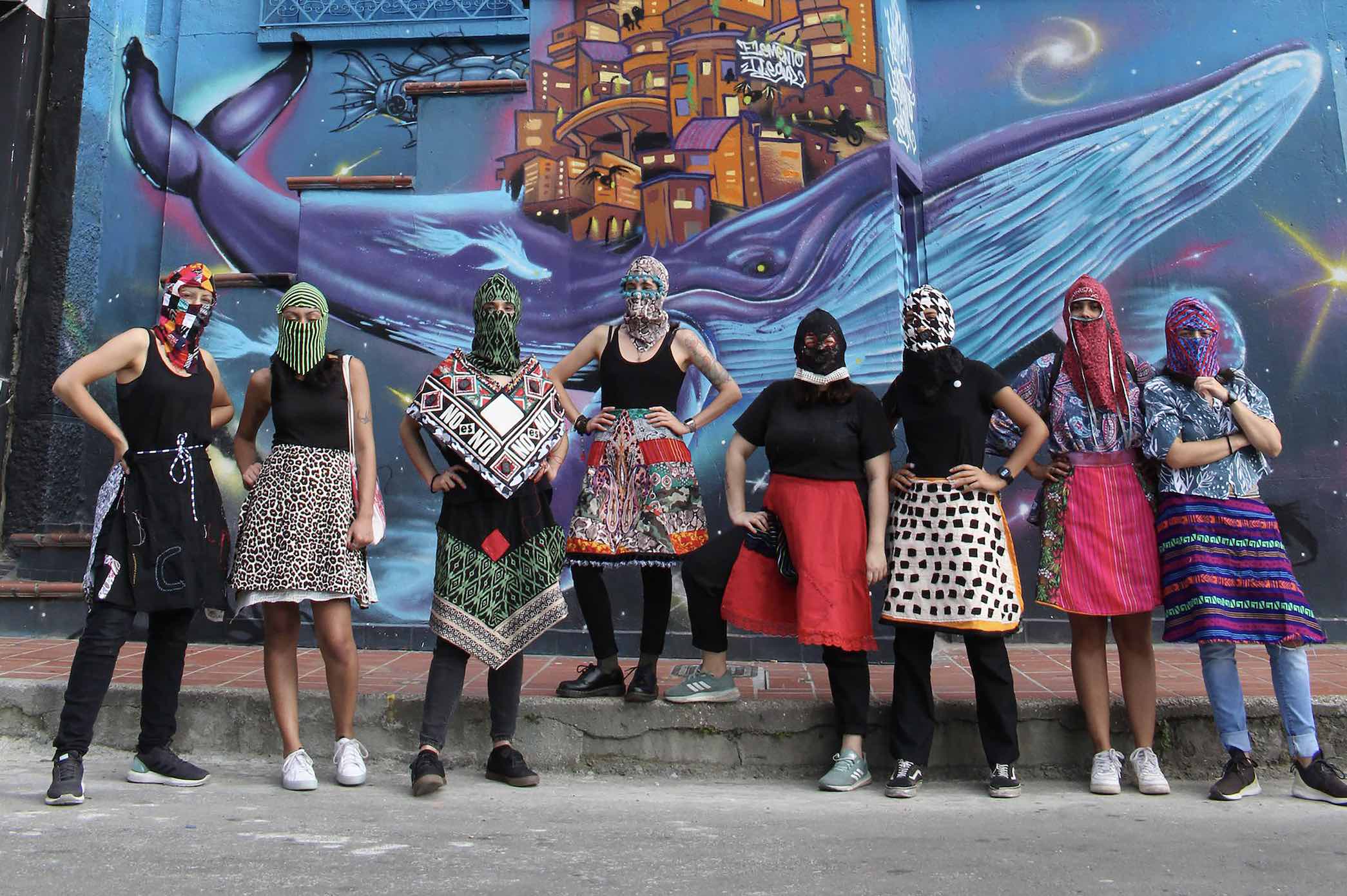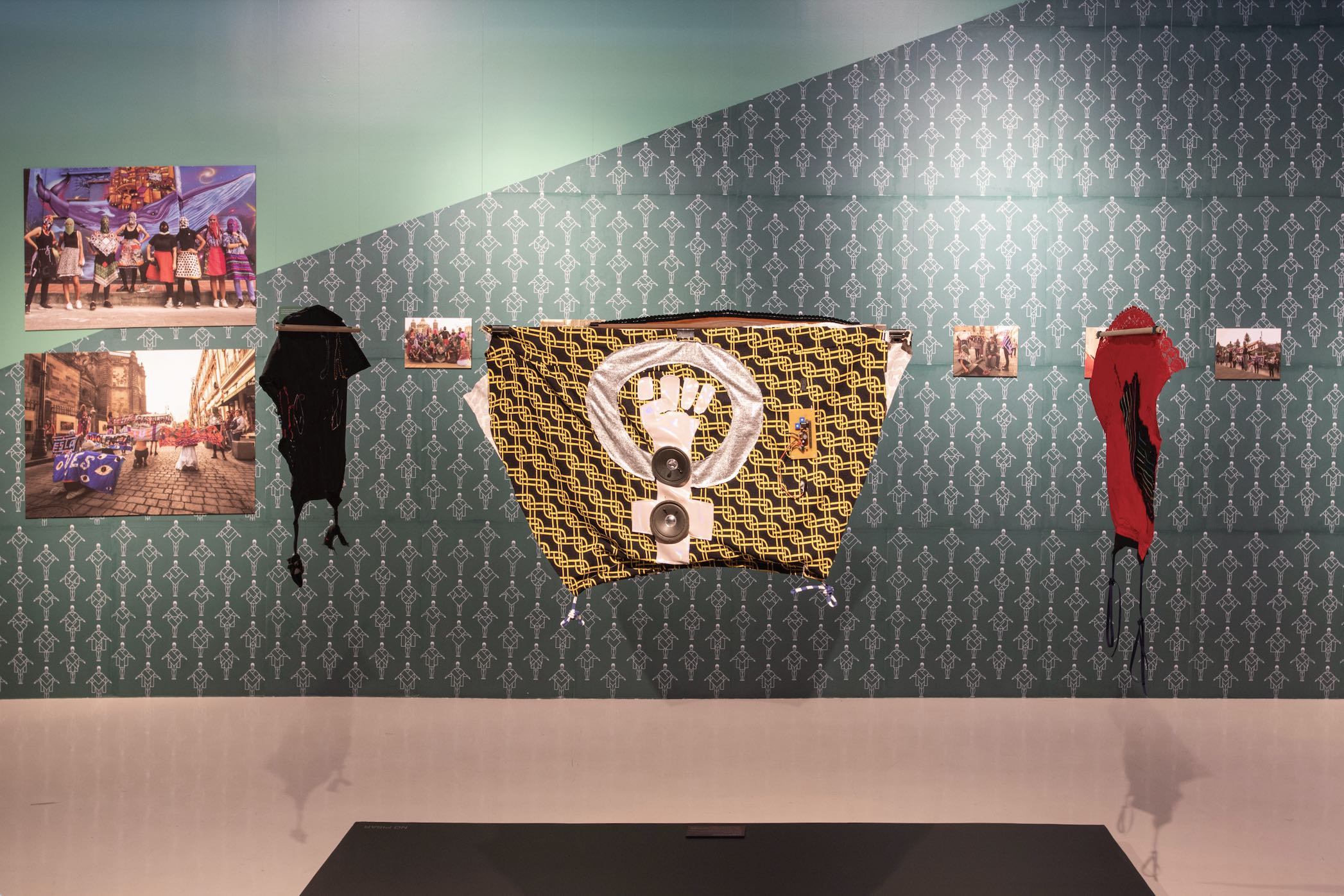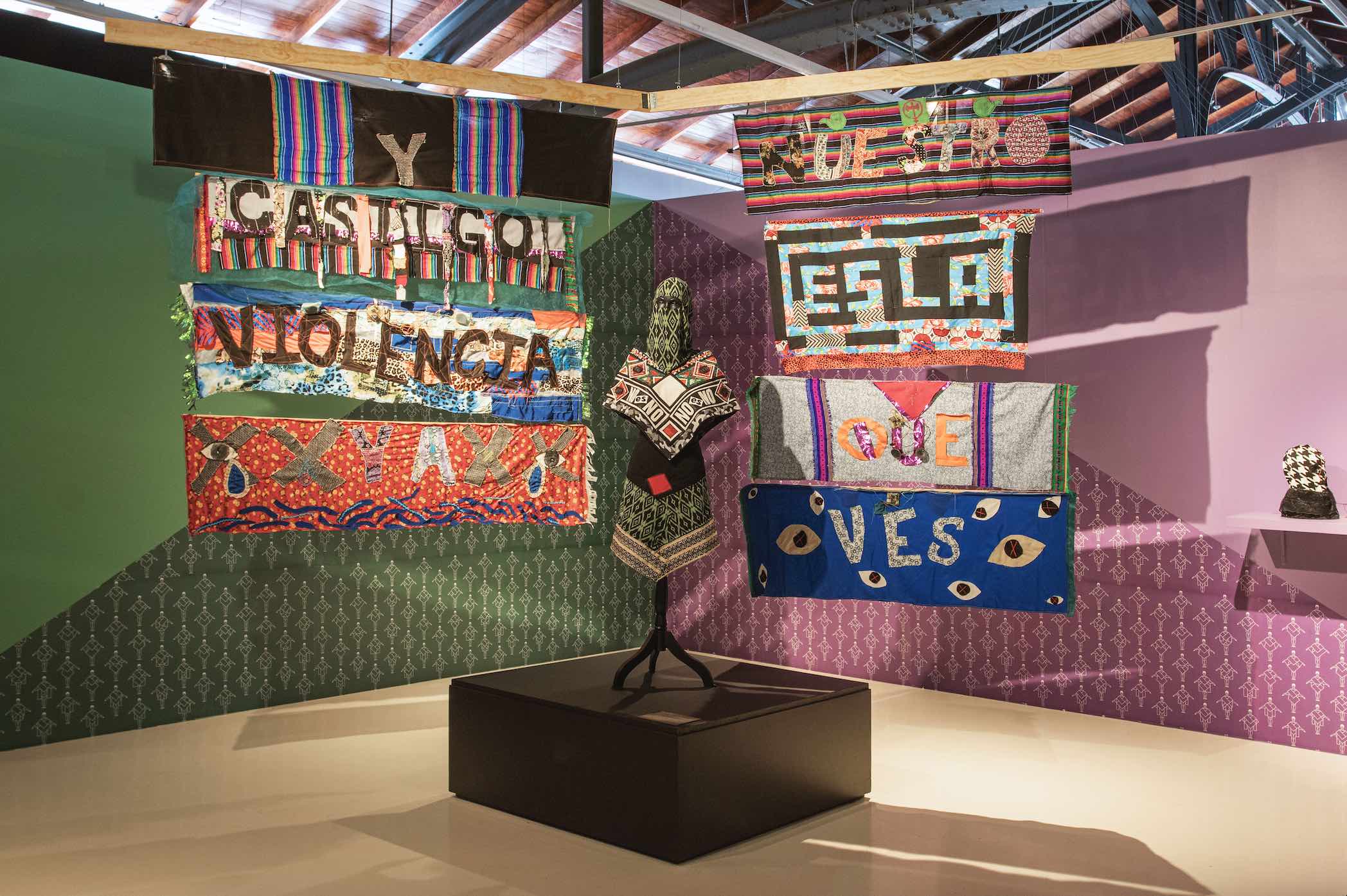
Essay
Writing the Unavoidable: 'Voz pública' by Dora Bartilotti
by Cristina Torres
At the Museo Universitario del Chopo
Reading time
7 min
There are texts that cannot but be uncomfortable since otherwise they would be insincere. They also need to be vulnerable so as not to risk evading the very substance of the matter at hand.
Writing about the wounds of gender violence is a triply arduous task. First, for the very nature of our bodies. The process of trauma throws us into a lag following the shock: mind and body launch their own protective mechanisms, fragmentation of memory and arrest of language; it’s a feat to manage the voice that emerges from such chaos. Added to this is the gag of a society that refuses to deal collectively and ethically with violence, manifested as the censorship, erasure, threat, desensitization, invalidation, and re-victimization of the survivors who post their stories in public, making it clear that a large portion of the social body is still aligned with pathology. For those of us who decide to speak, we find that we must choose the subject: the supports, the instruments, the spaces, the vocabularies, the grammars, the signs, the durations, the readings, the performativity, and the circulation of that writing.
Into this embodied knot of long historical debt is inserted Voz pública (“Public Voice”) by Dora Bartilotti at the Museo Universitario del Chopo. The exhibition displays the multiple facets of the homonymous project in which the artist has worked since 2018, devoted to visibilizing gender violence in such various Latin American cities as Mexico City, Medellín, Oaxaca, Tlaxcala, and Xalapa. The proposal is divided into three parts that feed into one another: an online platform, an electronic textile, and a series of group-based creation spaces that the artist calls “La Rebelión Textil: Laboratorios de textiles electrónicos y activismo feminista” (“The Textile Rebellion: Electronic Textile Laboratories and Feminist Activism”).
On the online platform (www.vozpublica.cc/) women and non-binary persons are invited to anonymously share their experiences with gender-based violence. Through this interface, the digital writing of the alphanumeric keyboard allows us to rehearse this outlet and to feed into the work, which is intertwined with a design inspired by traditional loom textiles. The potential of this double action launched by the artist is well-known by those of us who live in groups of women and of non-binary persons: the importance, both in terms of healing and of politics, of putting yourself into words and of reading others in a shared space, beyond what is hegemonically insisted on as staying within the “private.” In this sense, it might be useful to remember that the etymology of the word “private” comes from the Latin privare: to steal, to dispossess, to lose a loved one, to be separated from something. If trauma is a disconnection from oneself, the result of violence inflicted from the outside, the mandate of privacy and secrecy over abuse is a technology of gender that keeps us fragmented, at a loss over ourselves. Hence the restitution of the voice in community spaces in which its resonance is magnified, as a formidable bonfire of power.

The stories collected by the online platform are interwoven with the electronic textile. It is a garb that incorporates references to traditional textiles, as well as imaginary social struggles, in an attire integrated with an electronic system, micro-speakers and conductive threads, so that whoever wears it can transmit the stories collected online, now reconverted by a voice synthesizer. This documentation shows how the work has been activated in various urban spaces where high rates of violence have been reported, so that the sonorous accounts of victimized people burst right into those places ruled by impunity and the normalization of abuse. As expected, the videos also record moments of making evident people’s great discomfort upon listening to the stories emitted by the electronic textile during performances. We see closed gestures and attitudes, the ears turning deaf. The walls they raise are the same as those put up every time people categorized in marginalized groups invoke the writing of our wounds. But we should not be confused: these writings make us uncomfortable because they are sincere. They invoke outrage because they hit the nail on the head; they intimidate because they display a splendid strength.
The exhibition includes a selection of works that have resulted from collective learning proceses in the laboratories: electro-textile devices, cartographies embroidered with threads and circuits that spatialize personal experiences with gender-based violence in cities, anatomical atlases spun on a human scale with the stories that have traversed every part of the body, as well as records of the performative actions created by the female and non-binary participants, including Milena Contreras Hernández, Adriana Villamizar Gelves, Stephy Desiree Escárcega, Fernanda Morales, Stephym - Stephany Pino Morales, Darleen Martínez, Xóchitl Quezada, Michelle León Correo, Damaris Itzel Hernández, Laura Aldana Castro, and Chavela (Luciana Gómez). Even though it is impossible in a mounted exhibition to give an account of the depth and fertility that characterize collective processes, the records and works here created point toward the significance of meeting together in order to learn while in the presence of others, of opening up to vulnerability, of accompanying one another, and of exploring possibilities of creation.

Dora Bartilotti’s complex electrotextual-textile-pedagogical molecule ties a bridge between the writing traditions of various marginalized identities and the vigor of current anti-patriarchal struggles. With this, the artist has managed to create a dense, permeable, sensitive, and necessary space. Her proposal, rooted in lived experience and in writing from the encounter, demonstrates the importance of authentically committing ourselves to listening to and reading ourselves, paying attention to the mirror that reflects the shadow of our own gaze. At a time when cultural institutions are eager to invite projects with a feminist stance to their platforms, we must collectively ensure that their commitment to artists as well as the power of their works transcend the exhibition setting, transcend it towards a renewal of the daily practices of the artistic system, in favor of ones that are fairer, more dignified, and more integrated. Let us learn from the works and sustain their connection with life.
Voz pública is being presented at the Museo del Chopo until April 3rd, 2022.
Postscript
Following this text’s publication, media outlets have made public the complaint by artist Daris Rubio against Dora Bartilotti for improper appropriation of her project Huipil Defense, presented at the Centro de Cultura Digital in 2015. Although Bartilotti denies that there is a relation to Rubio’s project, there are significant similarities in conceptual elements, specifically regarding the idea of interweaving textiles of Indigenous tradition with electronic circuits in order to create an intervention in the public sphere. Thus, it is pertinent to point out and give credit to Rubio’s authorship and to the unfolding of recent events.
It is undeniable that the recognition of authorship and the history of ideas is closely linked to the evolution of the patriarchal-capitalist system. In artistic circles and reflection groups it is common to hear debates about the ownership of ideas; there are those who argue that authorship is an inherently capitalist and individualistic notion, while there are those who maintain that in the field of intellectual labor—in which thought is the means of production—it is necessary to maintain clear limits. From a critical and anti-patriarchal historical position, attentive to the implications of the archive, it is essential that marginalized identities, among them those of women, write and be recognized within the framework of affective and intellectual affinities. In that sense, it is a question of recognizing legacies thanks to which our possibilities expand, as well as recognizing how creating is likewise a matter of reading others.
Translated to English by Byron Davies
Published on March 24 2022